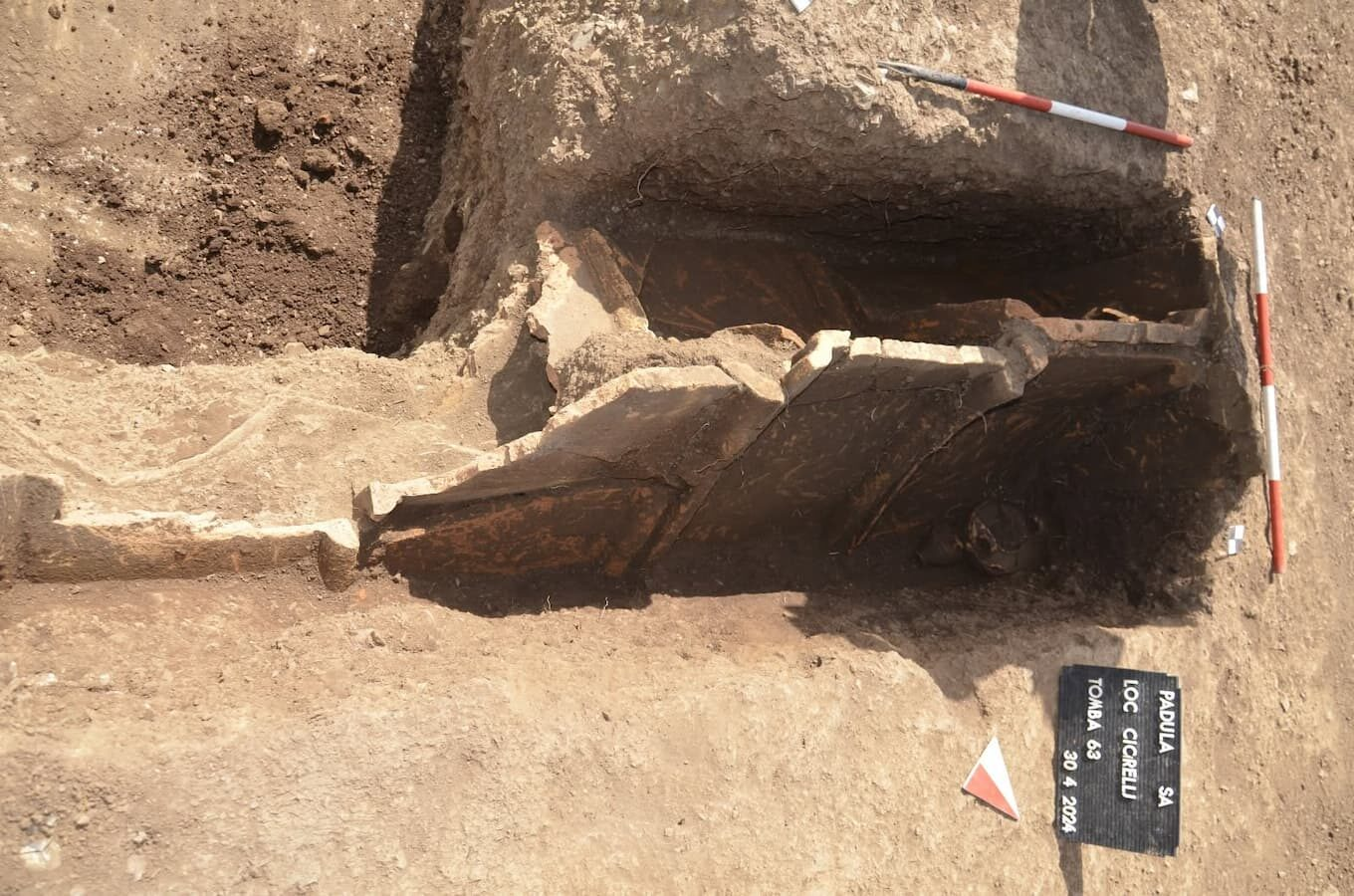Archaeologists in southern Italy have uncovered a remarkable collection of nineteen ancient tombs in Padula, Campania, shedding new light on the region’s historical and cultural significance. This discovery, announced on February 5, was the result of an extensive archaeological excavation aimed at preserving invaluable heritage.
Discovery Amidst Unauthorized Construction
The excavation was initiated following reports of unauthorized construction in Contrada Cicirelli, where attempts to build a stable inadvertently damaged a group of ancient burials. Upon identifying the disturbance, local authorities, including the Soprintendenza Archeologia Belle Arti e Paesaggio of Salerno and Avellino, collaborated with the Lagonegro Prosecutor’s Office and the Carabinieri’s Nucleo Tutela Patrimonio Culturale to secure the site and commence urgent preservation efforts.
Details of the Burials
Most of the recovered tombs are classified as “a cappuccina” burials, a type of grave built with terracotta tiles arranged in a pitched-roof style. In some cases, the deceased were laid directly in pits marked by large stones positioned at the head. The burial site also contained an array of grave goods, including black-glazed ceramics and vases decorated with red-figure designs, believed to have originated from Lucanian workshops, likely in the Vallo di Diano region. Some of these vases were found outside the tombs, indicating the practice of post-burial rituals. Based on these artifacts, experts have dated the burial site to the latter half of the 4th century BC.
Significant Finds: Warrior’s Tomb and Unique Artifacts
Among the most extraordinary discoveries was tomb number 64, an “a cappuccina” grave that housed a collection of black-glazed pottery and a small, unadorned pot. Inside this pot, archaeologists found a silver diobol coin, minted in Tarentum between 380 and 325 BC. The coin features the goddess Athena on one side and Hercules defeating the Nemean lion on the other.
One of the burial slabs also contained a rare engraving made before firing, depicting a horseman in full gallop. The rider, wearing a helmet, appears to be raising his arm as if preparing to throw a spear. This suggests the individual buried there may have been a warrior of high status within the community.
Evidence of Social and Domestic Roles
Another warrior’s tomb contained an iron knife, a bronze belt worn at burial, a krater—traditionally used in symposium rituals—adorned with female imagery, along with metal spits, fire supports, and a lead candelabrum. The presence of these domestic items hints at the individual’s prominent social role, both in warfare and in household settings.
The arrangement and characteristics of these tombs have led archaeologists to speculate that the site may be linked to an ancient settlement or agricultural community from the same period. This discovery not only enhances understanding of burial customs in 4th-century BC Italy but also offers deeper insights into the lives of the people who once inhabited the region.
The findings from Padula serve as a reminder of the importance of preserving historical sites, ensuring that future generations can continue to explore and appreciate the rich heritage of the past.







